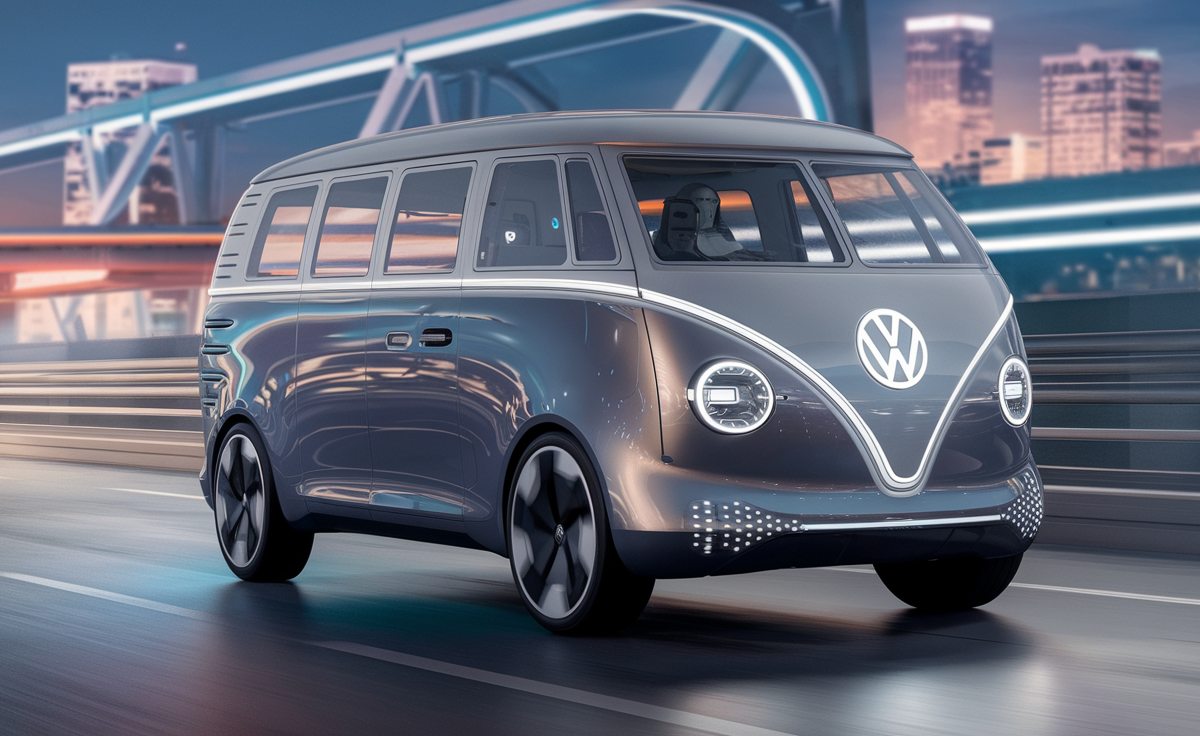The thunderous roar of a V8 engine is replaced with the hushed hum of an electric motor. An electric minivan, a modern incarnation of the iconic VW microbus, glides effortlessly past the 200 km/h mark on the Autobahn, heralding the dawn of a new automotive era.
The Volkswagen ID Buzz, a vehicle that once existed only in concept form, is now turning heads on the road. Initially revealed in 2001, VW revisited their classic Transporters and Kombis to create a modern, electric minivan. After a stunning debut in 2017, the Buzz quickly became an anticipated release even for the non-auto enthusiasts.
However, the journey from concept to reality took longer than expected. It took seven years for the ID Buzz to appear on North American roads, two years after its European debut. The initially optimistic outlook for EV adoption has since been tempered by rising costs during the pandemic and concerns about import tariffs and clean vehicle tax credits.
The Underpinnings of this Market-Shaking Announcement
The delay in the ID Buzz’s arrival was largely due to VW’s development of a more powerful rear drive unit. The 2025 ID Buzz Pro S Plus model is equipped with this unit, boasting a healthy 282 horsepower (210 kW) and 413 lb-ft (560 Nm) of torque, and is paired with a 91 kWh battery pack.
The official EPA range of the Buzz is estimated at 234 miles, which may seem disappointingly low. However, after a week of testing, this figure appears conservative. Careful driving can yield 3.1 miles/kWh (20 kWh/100 km), with high-twos achievable under normal driving conditions. With an 89 percent state of charge, the Buzz’s onboard system estimated a range of 255 miles (410 km).
Given these specifications and performance metrics, it’s clear that VW’s electric minivan is set to challenge the current EV market dynamics.
What This Means for Motorists
The arrival of the ID Buzz has immediate implications for daily drivers. The shift to electric vehicles requires a change in mindset and habits, particularly regarding vehicle charging and range management.
Economically, the ID Buzz does represent a higher upfront cost compared to traditional petrol-powered vehicles, particularly in the midst of a pandemic-driven rise in prices. However, the potential savings on fuel and maintenance costs over the vehicle’s lifetime could offset this initial investment.
The Winners and Losers of this Revolution
Early adopters and tech enthusiasts stand to benefit the most from this shift. Those open to embracing new technologies and are willing to adjust their driving habits will find much to appreciate in the ID Buzz.
Conversely, those resistant to change or heavily reliant on long-distance driving without frequent charging opportunities may find the transition more challenging. The Buzz, like all EVs, requires a different approach to driving and vehicle ownership.
Next Steps to Watch
Moving forward, the key dates to watch are the official release dates for the ID Buzz in various markets. Additionally, keep an eye on the development and deployment of charging infrastructure, which will play a critical role in the adoption of EVs.
For potential buyers, it’s worth considering the timing of your investment. With the EV market and associated policies rapidly evolving, it could be advantageous to wait and see how these factors develop.
As we look towards the future of the automotive industry, it’s clear that the electrification revolution is just beginning. The VW ID Buzz is a compelling reminder of the exciting developments on the horizon.
